What’s the Ideal Monitor Height and Viewing Angle to Protect Your Eyes?
When we spend much time in front of a screen, even the slightest discomfort in monitor position can lead to dry eyes, neck strain, and persistent fatigue. But here's the good news: small adjustments to your monitor height and viewing angle can make a huge comfortable!
In this guide, we’ll break down the ideal monitor height, how to find the best viewing angle, and which height adjustable monitors or wall mounts can help protect your eyes and your sitting posture.
Ideal Monitor Height & Eye Comfort: What You Need to Know
Why Monitor Position Matters for Eye Comfort
A poor monitor setup is one of the most common causes of eye strain in office and home environments. When your screen is too high or too low, your eyes constantly readjust focus, and your neck muscles compensate, often without you realizing it.
A proper setup, on the other hand, keeps your eyes in a neutral, downward gaze, aligned with a screen that's placed at ergonomic height and an optimal viewing angle. This helps reduce glare, prevent dry eyes, and support better posture during long hours of work or gaming.
What Height Should My Monitor Be?

The best monitor height is not just about convenience, it’s about eye health and posture. Setting your monitor at the correct height is one of the most critical steps in creating an ergonomic workstation. A poorly positioned screen can lead to neck strain, eye fatigue, and poor posture over time. According to ergonomic best practices, your monitor should be placed so that:
- The top of the screen is at or just below your eye level when sitting upright.
- The screen is tilted slightly upward (10° to 20°) to reduce neck strain.
- The distance from your eyes to the screen is about an arm’s length (50–75 cm).
But here’s the challenge: monitor height isn’t one-size-fits-all. Your ideal setup depends on your height, specifically your sitting eye level and elbow position.
To make it easier, we've compiled a detailed reference table below showing the optimal monitor, keyboard, and seat heights based on user height, drawn.
| User Height (cm) | Standing Eye Level (cm) | Monitor Height (Sitting Eye Level) |
Keyboard Height (Sitting Elbow) |
Standing Elbow Height (cm) | Seat Height (cm) | Sit-Stand Adjustment (cm) |
|---|---|---|---|---|---|---|
| 152 | 145 | 99 | 109 | 58 | 40 | 18 |
| 155 | 147 | 100 | 111 | 59 | 40 | 19 |
| 157 | 150 | 102 | 113 | 60 | 41 | 19 |
| 160 | 152 | 103 | 114 | 61 | 41 | 20 |
| 163 | 155 | 104 | 116 | 63 | 42 | 21 |
| 165 | 157 | 107 | 118 | 64 | 42 | 22 |
| 168 | 160 | 109 | 120 | 65 | 43 | 22 |
| 170 | 163 | 110 | 122 | 66 | 44 | 22 |
| 173 | 165 | 112 | 124 | 67 | 45 | 22 |
| 175 | 168 | 114 | 127 | 68 | 45 | 23 |
| 178 | 170 | 115 | 128 | 69 | 46 | 23 |
| 180 | 173 | 117 | 130 | 71 | 46 | 25 |
| 183 | 175 | 119 | 132 | 72 | 47 | 25 |
| 185 | 176 | 120 | 133 | 73 | 47 | 26 |
| 188 | 178 | 122 | 135 | 74 | 48 | 26 |
| 191 | 180 | 124 | 137 | 75 | 50 | 25 |
| 193 | 183 | 127 | 140 | 76 | 51 | 25 |
The above mentioned are all monitor height placements at fixed distances from the monitor. If you want to know how far you should be from different monitors , you need to click on another article to check.
Why Monitor Viewing Angle Matters for Eye Comfort
What Are Monitor Viewing Angles And The Best Ergonomic Monitor Viewing Angle?
Monitor viewing angle refers to the maximum angle at which a screen can be viewed without significant image degradation. A good monitor should maintain accurate colors, contrast, and brightness even when you're not looking at it directly from the front. Typically, a display is considered to have an acceptable viewing angle when the contrast ratio stays above 10:1 and there’s no noticeable grayscale inversion or color distortion.
Viewing angles are crucial for multi-user setups, professional color work, and entertainment where viewers might not always sit dead center.
Best Ergonomic Monitor Viewing Angle on the other hand is rather concerned with how your body feels when using the monitor over long durations of time. Optimally, the screen should be positioned at a few inches below your eye level and slightly higher to keep you relaxed at the neck level and eyes. Your monitor may be of high viewing angle but give it a very high or low position and you will eventually feel the pain in the body.
Monitor Viewing Angles by Technology
| Technology | Typical Viewing Angle (H/V) | Color & Contrast Consistency | Notes |
|---|---|---|---|
| TN | 45°–65° | Poor | Budget panels, fast refresh, but bad off-angle |
| VA | 160°–178° | Moderate | High contrast, slight off-angle color shifts |
| IPS | 178° / 178° | Excellent | Ideal for wide viewing and color accuracy |
| OLED | ~180° | Exceptional | Best overall viewing angle performance |
| QLED (VA) | ~120°–160° | Moderate | Depends on underlying panel |
| Mini LED | Panel-dependent | Good to Excellent | Varies by backlight zone and panel type |
Local dimming improves contrast, viewing angle depends on panel type
The Best Ergonomic Monitor Viewing Angle
Ergonomic screen positioning isn’t the only standard. Each monitor panel type has different viewing angle characteristics, which can affect your ergonomic viewing angle. TN panels demand precise alignment, while IPS and OLED offer more flexibility. Below, we break down the best ergonomic angles for each display type.
TN Monitor — Demands Precision or You’ll Notice
- Height: Top of screen aligned with or slightly below eye level
- Best Ergonomic Viewing Angle: Upward tilt of 10°–15°
- Reasoning: TN panels have very narrow vertical viewing angles. A few degrees too high or too low, and you’ll start seeing contrast drop and grayscale inversion, especially with dark content. Ergonomically, this means you have very little room for adjustment. The screen needs to sit exactly where your eyes are naturally focused, with minimal vertical offset.
- Bottom line: TN panels are strict. You’ll need to sit directly in front of them and maintain precise alignment to avoid visual distortion.
VA Monitor — Moderately Flexible but Needs Centered View
- Height: Top of screen slightly below eye level
- Best Ergonomic Viewing Angle: Upward tilt of 10°–20°
- Reasoning: VA panels perform better than TN, especially horizontally, but their vertical viewing angle is still weaker than IPS. To avoid the mild color shifting from above or below, it's best to keep your eyes close to the screen's center line. A typical ergonomic viewing angle (slightly downward gaze) works well here.
- Bottom line: VA lets you relax a little, but stay close to center to avoid vertical distortion.
IPS Monitor — The Ergonomic Champion
- Height: Top of screen 15°–20° below eye level
- Best Ergonomic Viewing Angle: Upward tilt of 10°–25°
- Reasoning: IPS panels offer the widest stable viewing angles of any LCD type. This means you can comfortably set your monitor at standard ergonomic heights—center of screen slightly below eye level—and move around more freely without seeing any color or contrast degradation.
- Bottom line: IPS panels give you maximum freedom to follow ergonomic best practices without sacrificing visual quality.
OLED Monitor — Ultimate Freedom (But Handle with Care)
- Height: Any comfortable position—eye level or 15°–25° below
- Best Ergonomic Viewing Angle: Upward tilt of 10°–30°
- Reasoning: OLED screens offer nearly perfect viewing angles from all directions. You can position the screen high, low, or off-center and still get full brightness and color accuracy. This makes OLED ideal for standing desks, dynamic workspaces, or creative workflows. The only ergonomic caveat is screen burn-in—more of a usage concern than angle.
- Bottom line: OLED gives you total ergonomic freedom—but be mindful of screen content to avoid long-term burn-in.
QLED Monitor — Depends on the Core Panel
-
Height:
- If IPS-based: Top of screen 15°–20° below eye level
- If VA-based: Top of screen slightly below eye level
-
Best Ergonomic Viewing Angle:
- IPS: Upward tilt of 10°–25°
- VA: Upward tilt of 10°–15°
- Reasoning: QLED is an enhancement layer, not a panel type. Its ergonomic performance depends on the base LCD panel. With QLED-IPS, you get wide-angle flexibility and ergonomic freedom. With QLED-VA, you’ll still need to stay close to center. Either way, the extra brightness can lead to more eye strain if the angle is off.
- Bottom line: QLED’s ergonomic flexibility depends entirely on what’s underneath—know your panel.
Mini LED Monitor — Brilliant Brightness, Panel-Dependent Comfort
-
Height:
- If IPS-based: Top of screen 15°–20° below eye level
- If VA-based: Top of screen slightly below eye level
-
Best Ergonomic Viewing Angle::
- IPS: Upward tilt of 10°–25°
- VA: Upward tilt of 10°–15°
- Reasoning: Mini LED improves brightness and dimming precision, but the panel type still controls viewing angle. IPS-based Mini LED monitors are great for ergonomic setups with flexibility. VA-based ones need more precise vertical alignment. Brightness is a plus, but glare or haloing can still be a problem at steep angles.
- Bottom line: Mini LED boosts image quality, but your ergonomic sweet spot still depends on IPS or VA performance underneath.
Summary Table (Optional)
| Panel Type | Recommended Screen Height | Recommended Tilt | Ergonomic Flexibility |
|---|---|---|---|
| TN | Eye level to center-aligned | 10°–15° upward | Very limited |
| VA | Top of screen slightly below eye level | 10°–20° upward | Moderate |
| IPS | Top of screen 15°–20° below eye level | 10°–25° upward | Excellent |
| OLED | Flexible (eye level or 15°–25° below) | 10°–30° upward | Excellent |
| QLED – IPS-based | Top of screen 15°–20° below eye level | 10°–25° upward | High |
| QLED – VA-based | Top of screen slightly below eye level | 10°–15° upward | Moderate |
| Mini LED – IPS | Top of screen 15°–20° below eye level | 10°–25° upward | High |
| Mini LED – VA | Top of screen slightly below eye level | 10°–15° upward | Moderate |
Quick Reference Table: Ergonomic Monitor Setup
| Factor | Ergonomic Recommendation |
|---|---|
| Top of Monitor | Should be at or just below your eye level when seated upright. |
| Center of Monitor | Ideally 15°–20° below eye level, matching the natural resting angle of your gaze. |
| Viewing Distance | Approximately an arm’s length away (50–75 cm), depending on screen size. |
| Monitor Tilt | Tilt upward between 10° and 20° to align with your line of sight and reduce neck strain. |
| Panel Type | Affects how flexible your setup can be: IPS and OLED allow wide ergonomic freedom; TN and VA require more precise alignment. |
| Best Screen Size to Position | 24–27 inches for most desks; larger screens (32"+) may require deeper desks and higher mounts to maintain correct distance and eye alignment. |
| Mount Option | Height-adjustable stands or wall-mounted arms with tilt/swivel functionality make fine-tuning your setup much easier, especially for shared or small spaces. |
Final Thoughts: Choose Monitors That Support Eye Health

With monitors, comfort is not a luxury, it is a long term investment in your eye sight and posture. Whether your screen is sharp or colorful does not make a difference as long as it will end up making you have a stiff neck or strains on your eyes by the end of a day using it.
Select monitors that fit your viewing requirements as well as ergonomic dexterity.
IPS and OLED displays offer the greatest range of freedom when it comes to placing the panel, whereas the TN and VA require a bit stricter setting. Adjustable stands or monitor arms are not the kind of thing which you would want but they are a necessity if you ant to customize your workstation, and to avoid putting your monitor or display device in a position that is not aligned with your natural stare.
Don’t just choose a monitor that looks good.
Choose one that helps you feel good while using it every day.
FAQ
Q1: Is a monitor that’s too high bad for your eyes?
Yes. If your monitor is too high, your eyes will constantly shift upward, which can cause eye dryness, blurry vision, and neck tension. Over time, this unnatural posture increases the risk of chronic fatigue and forward head posture. A monitor ergonomic height setup always keeps your eyes gently angled downward.
Q2: What’s the difference between IPS and other panel types in viewing angle?
IPS monitors offer the widest viewing angles (typically 178 degrees), which means you’ll see consistent colors and brightness even when looking from the side or slightly above/below. In contrast, TN or VA panels tend to shift in color and contrast at off-center angles, which can force you to tilt your head — not ideal for long use.
Q3: Do height adjustable monitors really help with eye strain?
Absolutely. Computer monitors with adjustable height allow you to fine-tune screen positioning to match your unique eye level and posture. Combined with tilt and swivel functions, they support both ergonomic monitor viewing angles and long-term comfort, especially in multi-user or sit-stand desk setups.
Q4: What if I can't afford a height adjustable monitor?
You can still achieve ideal positioning by:
- Using a monitor riser or stand to elevate the screen
- Stacking books under the base (budget-friendly trick!)
- Pairing your monitor with a monitor wall mount for vertical adjustment
- Repositioning your chair height and desk posture





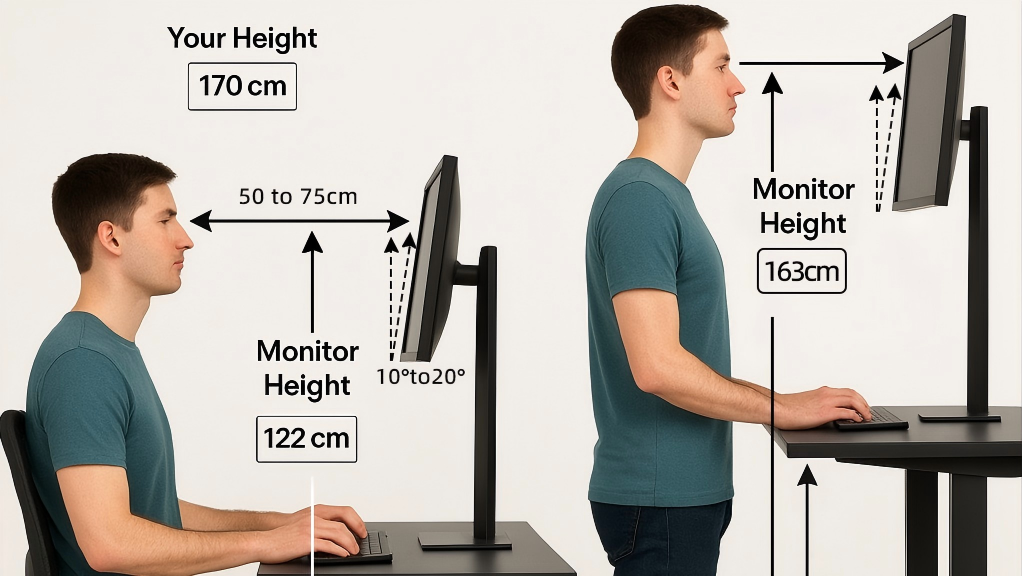


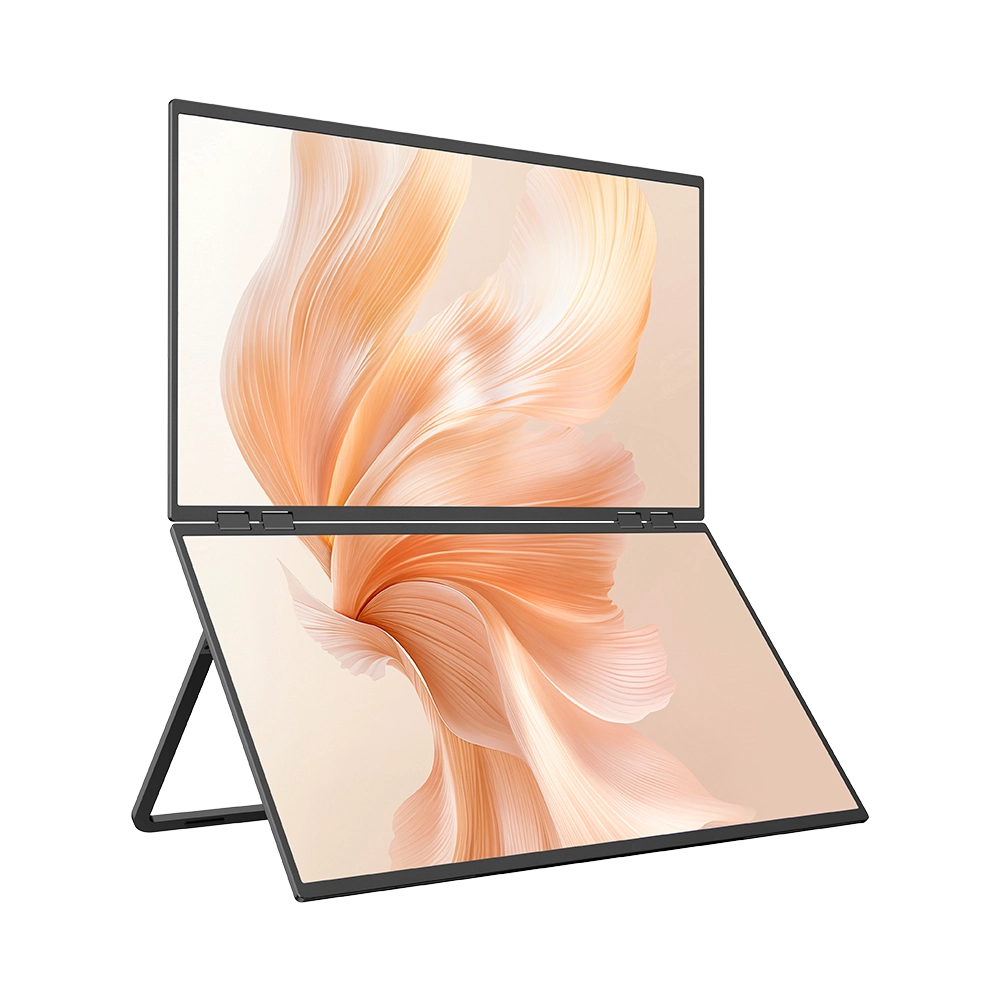
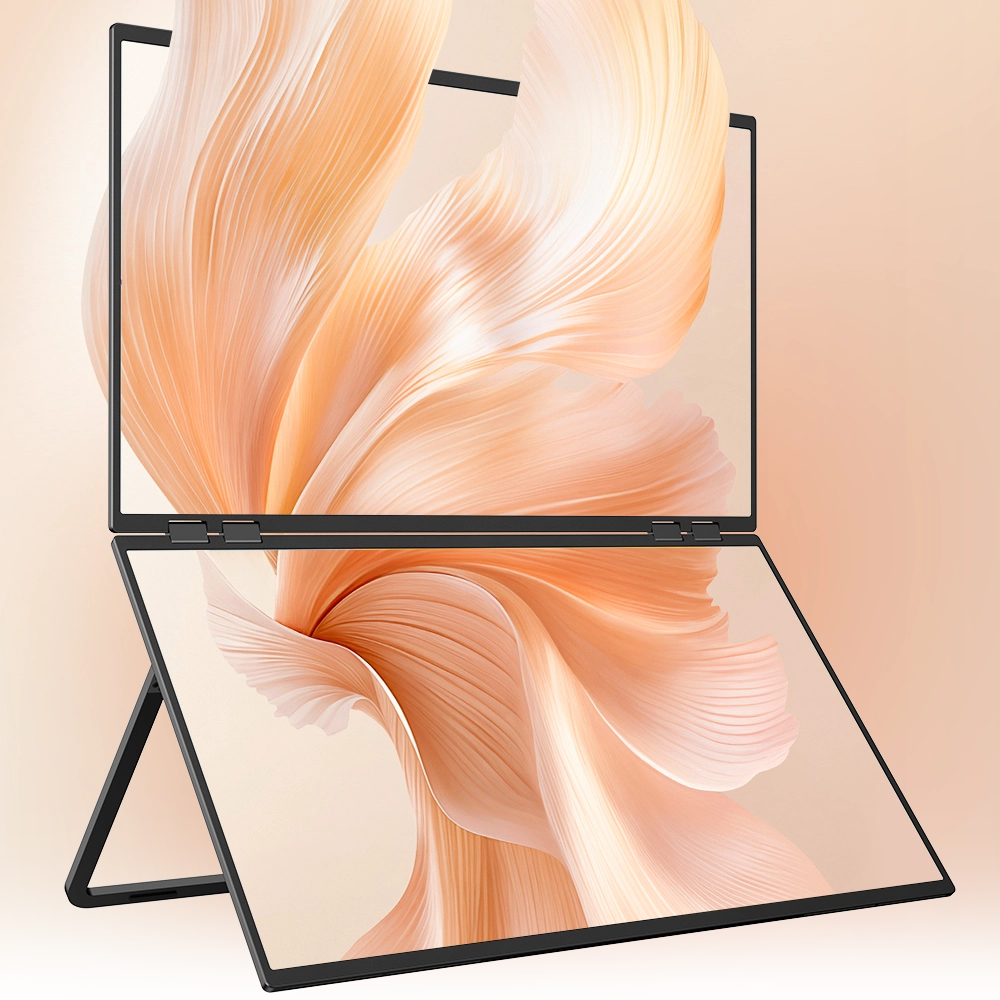


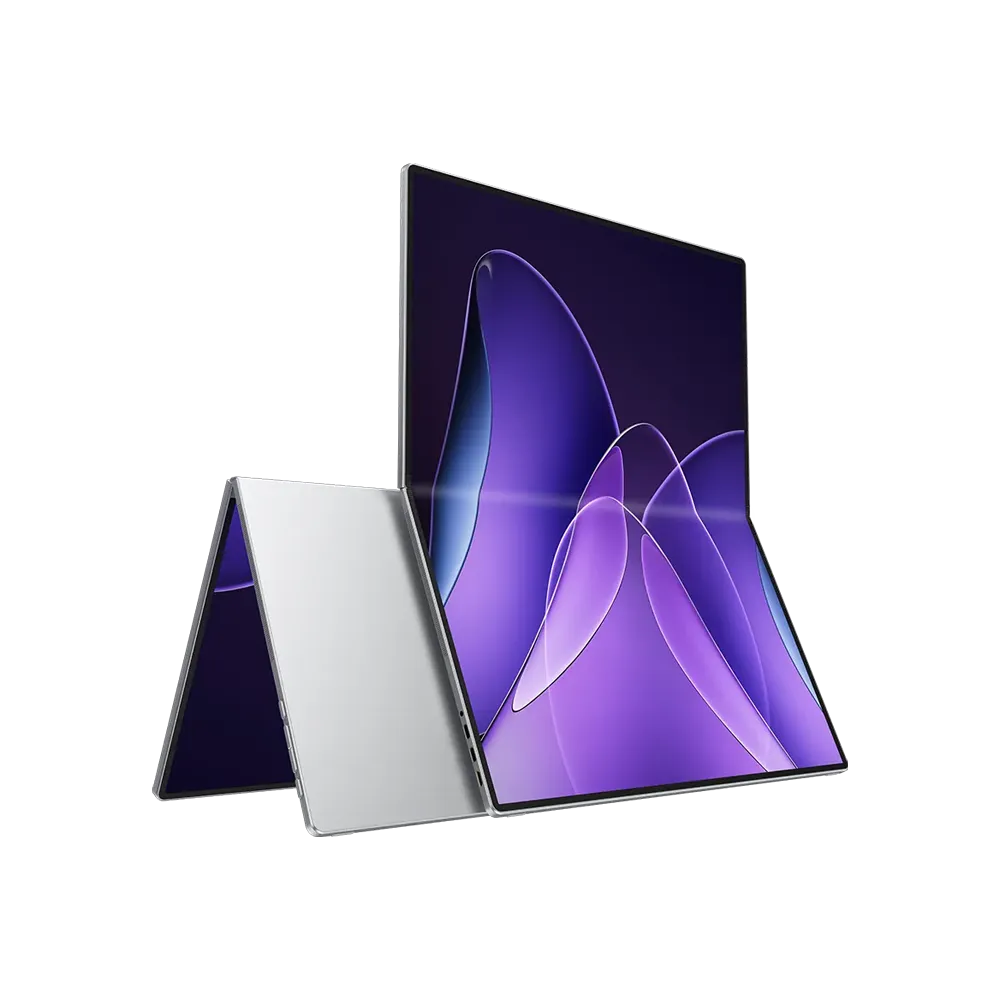

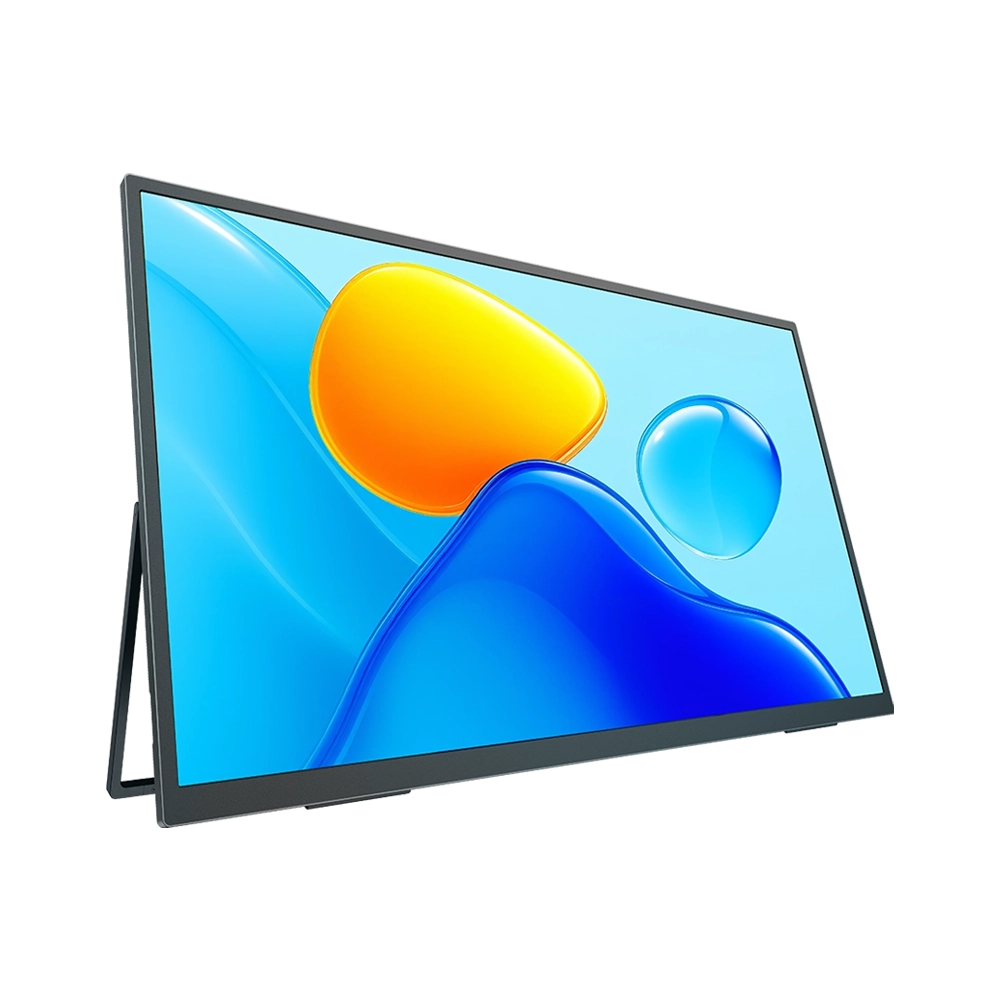


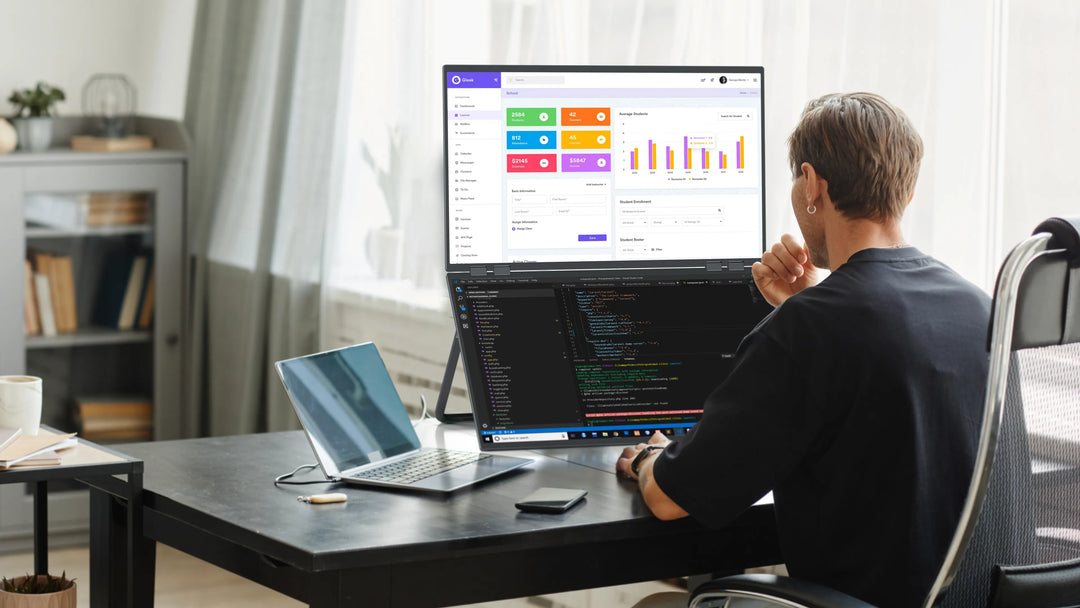

Leave a comment